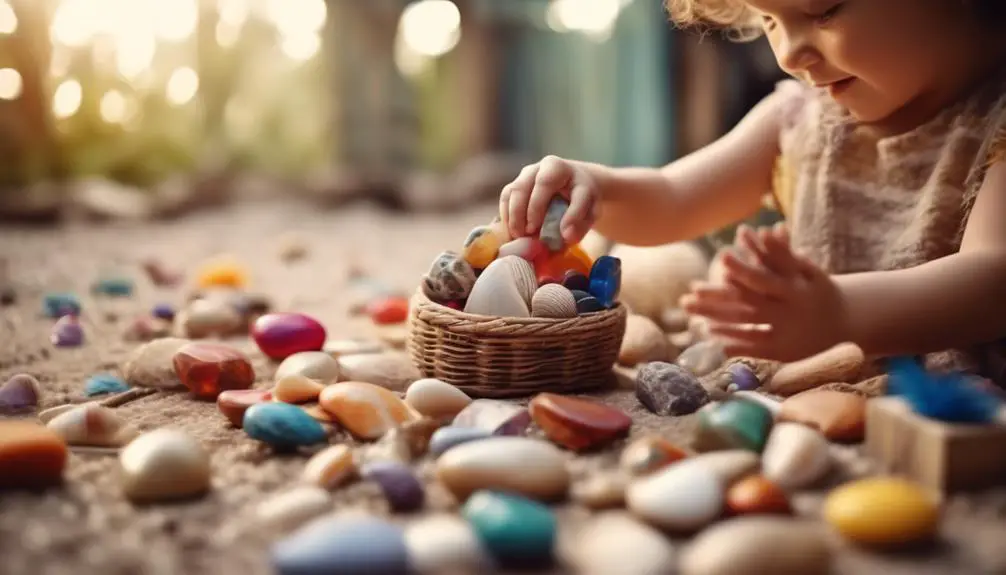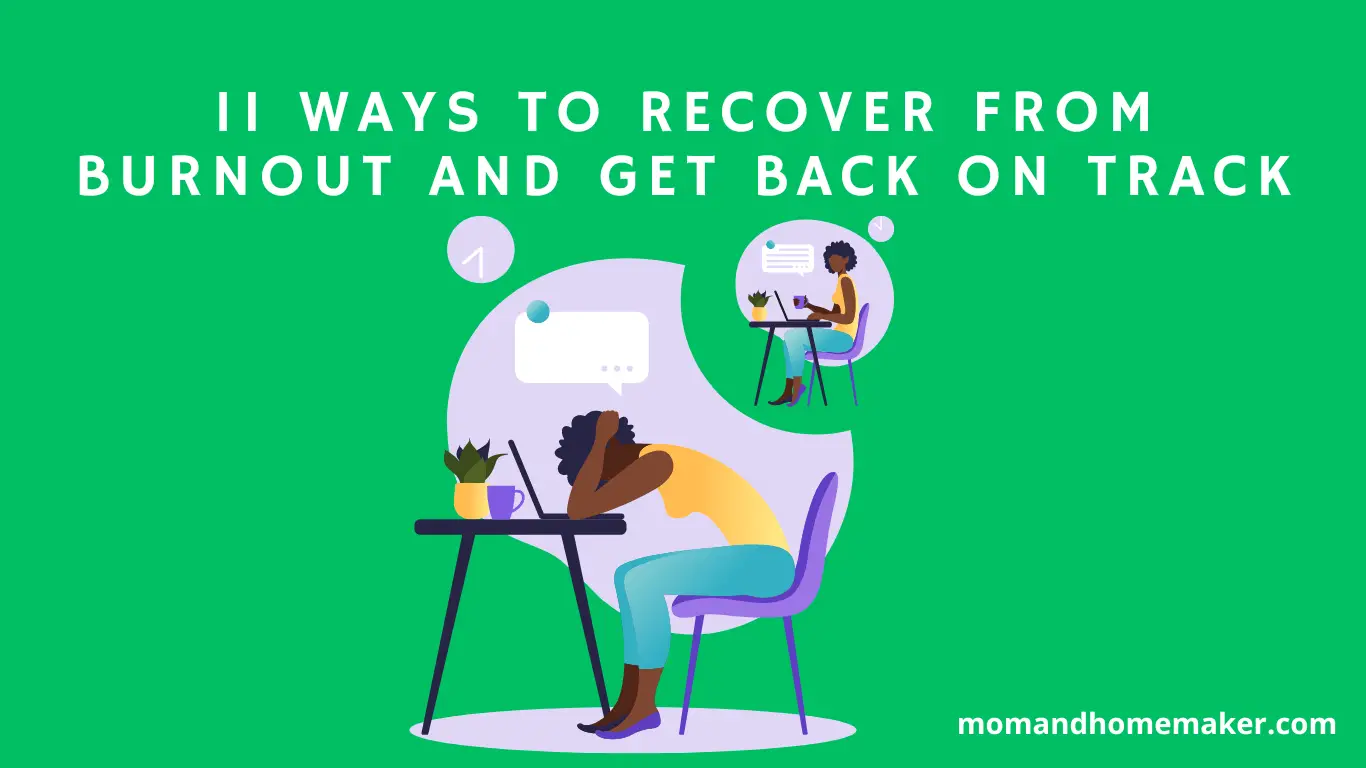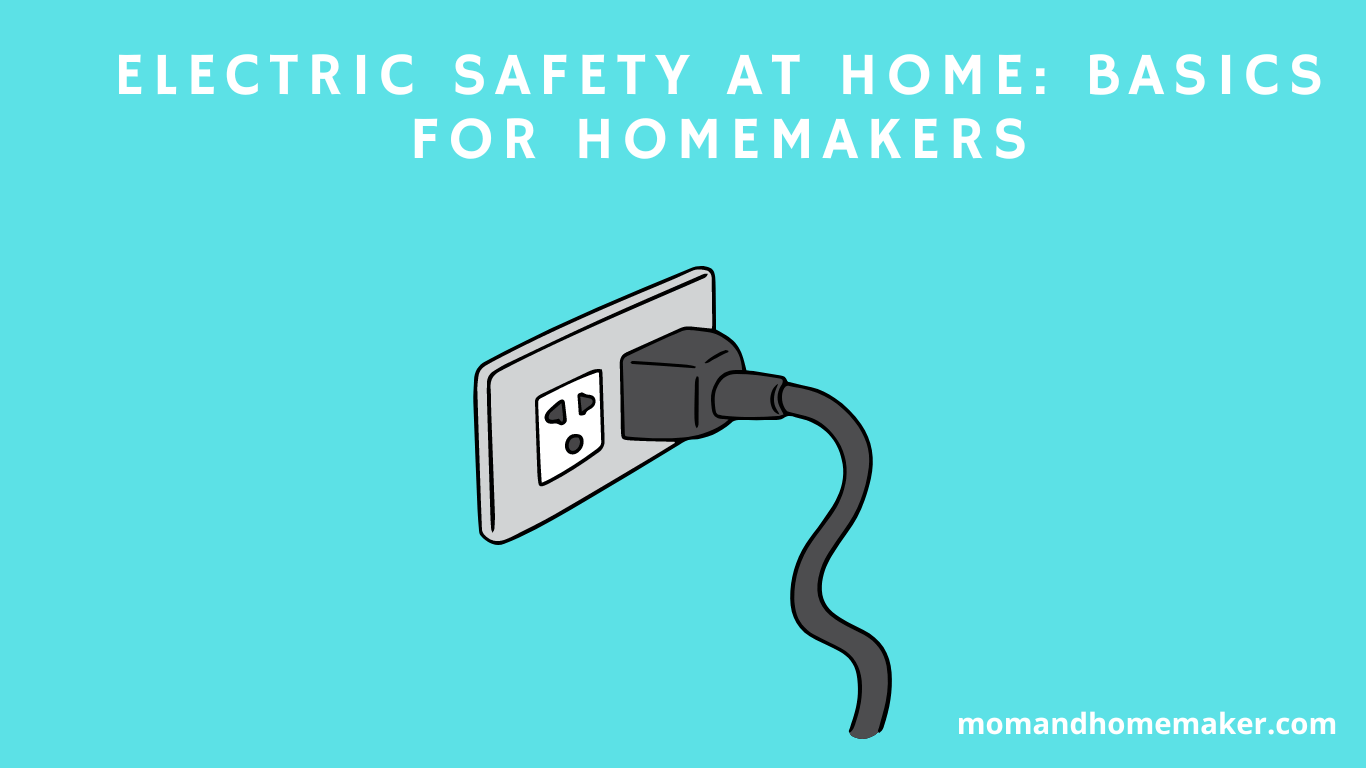Childcare providers often wonder if the type of play materials they offer can truly impact a child’s development.
The theory suggests that open-ended play materials, like blocks, loose parts, and natural materials, can enhance a child’s creativity, imagination, and problem-solving skills.
Let’s explore the benefits of incorporating open-ended play materials in childcare and how they can foster collaboration and communication among children. We’ll also discuss how these materials can be integrated into daily routines.
The Benefits of Open-Ended Play
Open-ended play offers many benefits for your child’s development and overall well-being. Engaging in open-ended play allows children to unleash their creativity and imagination, which in turn promotes cognitive, social, and emotional growth.
One of the main advantages of open-ended play is that it gives children the freedom to express their creativity without limitations. Unlike structured play, where there are set rules and outcomes, open-ended play encourages children to think outside the box and come up with their ideas. This ability to explore and create fosters a sense of independence and self-assurance, boosting their self-esteem and confidence.
In addition, open-ended play supports the development of problem-solving skills. When children engage in open-ended play, they encounter various challenges and obstacles that require them to think critically and find solutions.
This type of play allows them to experiment, make mistakes, and learn from them, ultimately enhancing their problem-solving abilities, which will benefit them in other aspects of their lives.
Moreover, open-ended play promotes social interaction and cooperation. When children engage in open-ended play, they often collaborate with their peers, sharing ideas and working together towards a common goal.
This collaborative play enhances their communication and social skills, teaching them how to take turns, negotiate, and resolve conflicts. These social skills are essential for building positive relationships and a sense of belonging.
Incorporating Loose Parts in Childcare
Promoting open-ended play in childcare is made easier by incorporating loose parts. By providing children with a variety of materials and objects that they can manipulate and use in different ways, you can encourage their creativity, problem-solving skills, and imagination.
One effective way to incorporate loose parts in childcare is through outdoor exploration. Outdoor play offers children the chance to engage with their surroundings and interact with nature.
By providing loose parts such as sticks, stones, and leaves, you allow them to explore and experiment with different textures, shapes, and sizes. They can build structures, create patterns, or even use them as props in their imaginative play.
This not only enhances their sensory development but also encourages them to develop a sense of wonder and curiosity about the natural world.
Incorporating loose parts in childcare also allows children to engage in open-ended play. Unlike toys with specific functions, loose parts can be used in a variety of ways, depending on the child’s imagination.
This promotes problem-solving skills and critical thinking as they figure out how to use the materials to achieve their desired outcomes. It also encourages collaboration and social interaction as children work together to build, create, and play.
To make outdoor play with loose parts even more engaging, you can provide specific examples and recommend products that children can use. For example, you could suggest using natural materials like pinecones, shells, or acorns as loose parts.
You could also recommend using loose parts from the environment, such as twigs, rocks, or flowers. By providing these specific examples, you’re giving caregivers and educators practical ideas to implement in their childcare settings.
Setting Up a Playful Environment
Creating a playful environment in your childcare setting is essential for fostering a sense of belonging and creativity among children. Here are three ways you can set up a playful environment:
- Arrange a variety of open-ended play materials: Fill your childcare space with toys and materials that encourage imagination and creative play. Include blocks, art supplies, and dress-up clothes. By offering a range of options, children can choose what interests them and explore their passions.
- Design inviting play areas: Create different play zones within your childcare setting, such as a cozy reading corner, a construction area, and a sensory exploration station. Each area should be well-organized and visually appealing, with clearly labeled materials and comfortable seating. This setup encourages children to freely move between activities and engage in independent play.
- Incorporate natural elements: Bring a touch of the outdoors inside by including plants, natural light, and wooden toys or baskets made from natural fibers. These elements create a calming and soothing atmosphere, promoting a sense of well-being. They also encourage children to connect with the world around them and explore their surroundings.
Open-Ended Materials for Sensory Play
Enhancing sensory play in your childcare setting involves providing a variety of materials that encourage open-ended exploration and engagement. Sensory play is crucial for a child’s development as it stimulates their senses and offers opportunities for sensory exploration.
By incorporating open-ended materials into your sensory play area, you can provide children with a range of tactile experiences that foster their creativity, imagination, and cognitive skills.
Here are some examples of open-ended materials for sensory play:
- Kinetic sand: This unique textured material allows children to engage in tactile play, stimulating their sense of touch and encouraging creativity.
- Water beads: These squishy and soothing sensory materials provide a calming and relaxing experience for children as they explore the different textures and shapes.
- Playdough: Playdough is a classic sensory material that allows children to mold, squish, and shape it in various ways. It promotes fine motor skills and hand-eye coordination.
- Rice or pasta: Offering rice or pasta for sensory exploration provides children with a different texture to manipulate and discover. They can pour, scoop, and run their fingers through the grains, stimulating their sense of touch.
- Feathers: Feathers offer a light and ticklish sensation when touched, engaging a child’s sense of touch and providing a unique sensory experience.
- Shaving cream: Shaving cream allows for messy, sensory-rich experiences. Children can use their hands to spread, squish, and explore the texture, promoting sensory exploration and creativity.
By providing these open-ended materials, children can engage in sensory exploration and develop their fine motor skills, hand-eye coordination, and cognitive abilities. They can squish, squeeze, mold, and create while experiencing a range of textures and sensations.
Promoting Imagination and Creativity
Enhancing children’s imagination and creativity can be achieved by incorporating open-ended materials into their play experiences. Here are three effective ways in which open-ended play materials can promote imagination development and creative play:
Building Blocks: Give children a variety of building blocks such as wooden blocks or Lego bricks. These materials allow children to explore their imagination and create unique structures.
They can build magnificent castles, futuristic cities, or even their spaceships. Through building, children develop problem-solving skills, spatial awareness, and the ability to envision something from nothing.
Dress-Up Corner: Create a special area with costumes, hats, and accessories for dress-up play. Encourage children to transform into their favorite characters or invent their own.
By engaging in pretend play, children can immerse themselves in different roles and scenarios, fostering their creativity and empathy. They can become superheroes, princesses, doctors, or even mythical creatures. The possibilities are endless in the dress-up corner!
Artistic Expression: Provide open-ended art materials like paints, brushes, clay, and collage materials. Encourage children to freely express themselves through art. This allows them to explore their imagination and create without limitations. Whether they’re painting abstract masterpieces, sculpting unique creatures, or collaging their dreams, artistic expression nurtures their creativity, self-expression, and problem-solving skills.
Encouraging Problem-Solving Skills
Incorporating open-ended play materials can help children develop problem-solving skills. When children are given materials with no predetermined outcome, they’re encouraged to think critically and come up with their solutions. This type of play allows them to explore different problem-solving strategies and develop their critical thinking techniques.
Open-ended play presents children with challenges that require them to think outside the box. They have the freedom to experiment, make mistakes, and try again, which helps them develop resilience and perseverance. As they encounter obstacles, they learn to analyze the situation, identify the problem, and devise a plan to overcome it.
Materials like building blocks, art supplies, and natural objects provide endless possibilities for problem-solving. Children can build structures, create art, and use their imagination to solve problems. They learn to think creatively and adapt their ideas as they encounter new challenges.
Encouraging problem-solving skills through open-ended play also promotes collaboration and cooperation. When children engage in group play, they learn to communicate their ideas, listen to others, and work together to find solutions. This fosters a sense of belonging and encourages children to value and respect different perspectives.
The Role of the Childcare Provider
Childcare providers play a vital role in promoting open-ended play and fostering problem-solving skills in children. As a childcare provider, you have the opportunity to create a nurturing environment that encourages exploration and creativity.
Here are three key ways you can enhance your role and support children in their development:
- Effective Communication: Building trust and rapport with children is crucial, and effective communication is the foundation for this. Take the time to actively listen to their thoughts, ideas, and concerns. Encourage them to express themselves through words, gestures, or art. By valuing their opinions and providing a safe space for open dialogue, you can create a sense of belonging and empower their problem-solving abilities.
- Building Trust: Trust is essential for children to feel comfortable and confident in their exploration. Show them that you’re a reliable caregiver by consistently meeting their needs and providing a secure environment. When they feel safe, they’re more likely to engage in open-ended play and take risks in problem-solving situations.
- Developing Rapport: Developing a positive rapport with children allows you to understand their unique strengths and interests. Take the time to get to know them on a personal level and tailor your interactions and activities to their preferences. By acknowledging their individuality and supporting their choices during play, you can foster a sense of belonging and empower them to solve problems in their creative ways.
Supporting Social and Emotional Development
Developing strong social and emotional skills is crucial for your child’s overall well-being and success in life. As a childcare provider, you need to support their ability to understand and manage their emotions and behaviors, as well as to foster empathy and compassion.
Supporting self-regulation involves helping children recognize and express their feelings, and providing them with strategies to calm down when they’re upset or frustrated. By equipping them with tools to self-regulate, you’re helping them build resilience and cope with life’s challenges.
Building empathy and compassion is another vital aspect of social and emotional development. It’s important to help children understand and appreciate the perspectives and feelings of others.
Encourage them to show kindness and understanding towards their peers, and provide opportunities for them to practice empathy through role-playing or discussing different scenarios. By nurturing empathy and compassion, you’re helping them form meaningful connections and contribute positively to their community.
Incorporating open-ended play materials can greatly support your efforts in developing these social and emotional skills. These materials allow children to explore, create, and problem-solve in their unique ways.
They encourage collaboration, communication, and negotiation with their peers. By engaging in open-ended play, children learn to navigate social interactions, practice self-regulation, and develop empathy and compassion as they work together towards common goals.
To further enhance your child’s social and emotional development, you may consider using specific products such as building blocks, art supplies, or pretend play toys. These materials provide opportunities for imaginative play, collaboration, and emotional expression.
Exploring Nature With Open-Ended Play
To help children develop socially and emotionally, encourage them to engage in open-ended play that explores the wonders of nature. Outdoor exploration and nature-based learning offer countless opportunities for children to connect with the natural world and develop a sense of belonging.
Here are three ways you can incorporate these activities into your childcare routine:
- Take the children on nature walks and organize scavenger hunts. Explore your neighborhood or local park together, encouraging the children to observe and interact with their surroundings. Point out different plants, animals, and natural features along the way. Create a scavenger hunt list with items like pinecones, leaves of different shapes and colors, or animal tracks. This will spark their curiosity and encourage meaningful engagement with nature.
- Set up sensory play stations in your outdoor play area that incorporate natural elements. Provide materials such as sand, water, rocks, sticks, and leaves for the children to touch, smell, and manipulate. This tactile experience will stimulate their senses and allow them to explore the textures and properties of nature firsthand.
- Create a small garden area where children can learn about the lifecycle of plants. Involve them in planting seeds, watering them, and watching them grow. Engage them in nature crafts by using materials they find outside, such as fallen leaves or flowers, to create collages or pressed art. These activities won’t only teach them about nature but also instill a sense of responsibility and care for the environment.
Enhancing Fine Motor Skills
Promote the development of fine motor skills in children through engaging in hands-on activities. These activities not only provide enjoyment but also help children develop important skills that will benefit them throughout their lives. One crucial skill to focus on is hand-eye coordination. By participating in activities that require the use of hands and eyes together, children can improve their coordination and dexterity.
Various activities can aid in the development of hand-eye coordination. For instance, providing children with puzzles or building blocks can be beneficial.
Encourage them to manipulate the pieces with their hands, carefully aligning them to create a finished product. This not only enhances their hand-eye coordination but also allows them to exercise their problem-solving skills.
Another essential aspect of fine motor skill development is strengthening finger muscles. Materials such as clay or playdough can be provided to children to help them build strength in their fingers. They can squeeze, mold, and shape the material, which requires them to use their fingers in different ways. This not only strengthens their finger muscles but also improves their grip and control.
Engaging children in activities that promote the development of fine motor skills is crucial for their overall development. By developing hand-eye coordination and strengthening finger muscles, children are better equipped to perform everyday tasks such as writing, buttoning clothes, and using utensils.
Therefore, it’s important to provide them with plenty of opportunities to engage in hands-on activities that will help them enhance their fine motor skills.
Adapting Materials for Different Age Groups
Consider the age appropriateness of materials to ensure optimal engagement and learning for children of different age groups. Adapting materials for infants and modifying play materials for preschoolers is important for their development and enjoyment. Here are some tips to help you adapt materials for different age groups:
- Adapting materials for infants: Infants are curious and learn through exploration. When adapting materials for this age group, focus on sensory experiences. Use soft, safe, and non-toxic materials that they can touch, squeeze, and manipulate. Consider providing materials such as textured balls, fabric blocks, and soft toys that stimulate their senses and promote their motor skills. Make sure the materials are large enough to prevent choking hazards and avoid small detachable parts.
- Modifying play materials for preschoolers: Preschoolers are more advanced in their development and need materials that challenge their cognitive, social, and physical skills. Consider providing open-ended materials such as building blocks, puzzles, and art supplies. Encourage imaginative play by providing dress-up clothes, dolls, and pretend play props. Let them explore and experiment with different materials, fostering problem-solving and creativity. Consider adding tools like scissors, glue, and markers to promote fine motor skills and self-expression.
- Encouraging group play: Choose materials that promote collaboration and cooperation among children of different age groups. Provide materials like building sets, board games, and musical instruments that allow them to play together and learn from each other. Encourage communication and sharing, creating a sense of belonging and inclusivity.
Fostering Collaboration and Communication
Encourage collaboration and effective communication by providing interactive play materials that promote teamwork among children. It’s crucial to foster independence and create a supportive environment where children can thrive.
By offering open-ended play materials like building blocks, puzzles, and art supplies, you can facilitate opportunities for children to work together, share ideas, and develop their social skills.
Open-ended play materials allow children to explore and create together, fostering collaboration as they work side by side, share ideas, and problem-solve as a team. Engaging in cooperative play helps children learn to respect each other’s ideas, take turns, and find compromises, promoting both independence and teamwork.
To further enhance collaboration and communication, incorporate group activities that require teamwork. For example, organizing a group project where children work together to build a fort using blankets and pillows encourages cooperation, collaboration, and effective communication as they assign roles and work towards a shared goal.
Providing opportunities for children to engage in group discussions or circle time helps develop their communication skills. Encourage active listening, turn-taking, and respectful expression of thoughts and feelings.
Creating a safe and supportive space for children to share their ideas fosters a sense of belonging and encourages open and effective communication.
To support these activities, consider providing specific examples and product recommendations. For instance, you can offer building block sets with various shapes and sizes, engaging puzzles with different difficulty levels, and a wide range of art supplies like markers, colored pencils, and paints. These materials will further encourage collaboration and creativity among children.
Introducing Loose Parts in Outdoor Play
Enhancing outdoor play experiences can be achieved by incorporating loose parts that encourage creativity and imaginative exploration. Introducing loose parts in outdoor play provides children with endless possibilities for exploration and discovery.
By incorporating natural materials into their play, a rich and engaging environment is created that stimulates their senses and promotes a sense of belonging.
Here are three ways you can introduce loose parts in outdoor play:
- Use natural materials like sticks, stones, and pinecones. These materials can be collected from the surrounding environment, allowing children to interact with nature in a hands-on way. They can build structures, create art, or use them as props in their imaginative play.
- Provide open-ended play materials such as buckets, shovels, and ropes. These items allow children to engage in self-directed play and use their creativity to come up with their games and activities. They can dig, build, or create obstacle courses, fostering their problem-solving skills and encouraging collaboration with their peers.
- Create a sensory garden or outdoor art area. By incorporating plants, flowers, and other natural elements, a space is created where children can explore different textures, colors, and smells. They can engage in sensory play, exploring the feel of different leaves or the scent of various flowers. Additionally, providing art supplies like paint, brushes, and easels allows children to express their creativity and create their masterpieces.
Incorporating loose parts in outdoor play not only enhances the play experience but also provides children with opportunities to explore and connect with the natural world around them. By using natural materials and providing open-ended play materials, an environment is created that fosters creativity, imagination, and a sense of belonging.
Incorporating Open-Ended Play in Daily Routines
Incorporating open-ended play into your daily routines can be easy and seamless. One way to do this is during mealtime. Instead of just sitting at the table and eating, you can provide your child with utensils that have different textures, shapes, and colors.
This can enhance their sensory experience and encourage creativity and imagination. You can also let them play with food-safe play dough, which can add an extra element of fun to their mealtime.
Naptime is another great opportunity to incorporate open-ended play. Instead of simply putting your child in their crib or bed, create a cozy and inviting environment for them to explore and relax in.
Provide them with soft, open-ended materials like blankets, pillows, and stuffed animals. Encourage them to use their imagination and create their own cozy space. This can make naptime a more enjoyable experience for both of you.
You can also incorporate open-ended play into other daily routines, such as bath time or getting dressed. During bath time, give your child different containers, cups, and toys to explore and experiment with pouring and filling. This can make bath time more engaging and fun.
When getting dressed, offer them a variety of clothing options and let them mix and match. This can encourage their independence and creativity.
Evaluating and Updating Play Materials
Evaluating and updating play materials is a crucial step in ensuring that open-ended play is effective and enjoyable for children. By regularly assessing and refreshing the toys and materials available, you can create an engaging environment that fosters curiosity, creativity, and learning.
Here are three reasons why evaluating and updating play materials is important for your childcare setting:
- Meeting developmental needs: As children grow and develop, their interests and abilities change. It’s important to regularly evaluate play materials to ensure that they’re suitable for each child’s age and stage. By updating the materials, you can provide a variety of options that cater to different developmental needs, promoting growth and learning.
- Encouraging imagination and exploration: Open-ended play materials, such as blocks, art supplies, and natural objects, allow children to use their imagination and explore their surroundings. By evaluating and updating these materials, you can introduce new items that spark curiosity and creativity. This variety keeps children engaged and encourages them to explore new possibilities.
- Promoting inclusivity and diversity: Evaluating play materials also allows you to assess the diversity and inclusivity of the toys available. It’s important to provide materials that represent different cultures, abilities, and backgrounds so that children feel a sense of belonging and can learn about and appreciate diversity from an early age. By regularly updating the play materials, you can ensure that they reflect the diverse world we live in.
Conclusion
When updating the play materials for your childcare center, it’s important to consider the benefits of open-ended play.
By using loose parts and creating a playful environment, you can encourage imagination, creativity, collaboration, and communication among the children.
Open-ended materials provide endless opportunities for learning and growth, whether it’s through sensory play or outdoor activities.
Take advantage of the chance to provide these materials and witness the children’s curiosity and joy thrive.
















